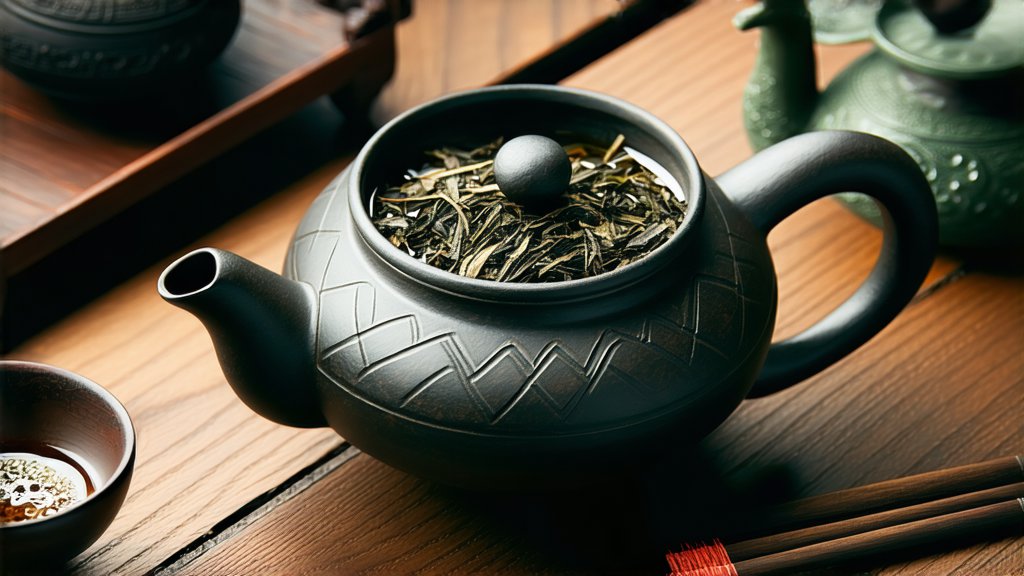
Liu Bao Zhu Cha, also known as Six堡茶, represents a unique and revered category within the vast spectrum of Chinese black teas. This distinctive tea hails from the Guangxi region in southern China and is celebrated for its complex flavors, numerous health benefits, and rich cultural heritage. In this article, we will delve into the history, varieties, production methods, and tasting techniques of Liu Bao Zhu Cha, offering international readers an insightful look into this remarkable tea.
Historical Background
The history of Liu Bao Zhu Cha dates back over a millennium to the Tang Dynasty (618-907 AD), where it was initially developed as a means to preserve tea for long-distance trade along the ancient Silk Road. The name "Liu Bao" translates to "Six Fortresses," referring to the six fortified posts that guarded the trade routes during that era. Over time, Liu Bao Zhu Cha became a staple in the diet of local populations and traders alike, prized not only for its flavor but also for its medicinal properties.
Varieties of Liu Bao Zhu Cha
Liu Bao Zhu Cha comes in two primary forms: raw (Sheng) and ripe (Shou). The raw version undergoes minimal processing and relies on natural aging to develop its flavor profile, while the ripe variety is subjected to a post-fermentation process called "wet piling," which accelerates maturation. Each type offers a unique taste experience, with raw Liu Bao Zhu Cha being lighter and more astringent at first, evolving into a smoother, deeper flavor over time. In contrast, ripe Liu Bao Zhu Cha starts with a rich, earthy taste and becomes increasingly mellow and woody as it ages.
Production Process
The production of Liu Bao Zhu Cha is a meticulous process that involves several stages:
-
Harvesting: Only specific tea plant varieties, such as Camellia sinensis var. assamica, are used for Liu Bao Zhu Cha. These leaves are typically harvested in spring and autumn when they are at their peak quality.
-
Withering: Freshly picked leaves are spread out to wilt under the sun or in shade, reducing moisture content and softening the leaf structure.
-
Rolling: The withered leaves are then rolled to break down cell walls, releasing essential oils and enzymes. This step is crucial for initiating the fermentation process.
-
Fermentation: For raw Liu Bao Zhu Cha, the leaves are piled together to allow natural microbial activity to occur. This can take several months to years. For ripe Liu Bao Zhu Cha, the leaves are piled in a controlled environment with added moisture to expedite fermentation, usually taking several weeks to months.
-
Drying: After fermentation, the tea is dried to halt further fermentation and reduce moisture content to prevent mold growth.
-
Aging: Both types of Liu Bao Zhu Cha benefit from extended aging, which enhances their complexity and depth of flavor. Aging can be done in large clay jars or bamboo baskets, allowing the tea to interact with the surrounding air and develop its unique characteristics.
Tasting Techniques
Tasting Liu Bao Zhu Cha is a sensory journey that engages all the senses. Here are some tips for an authentic tasting experience:
-
Warm-Up: Begin by warming your teapot and cups with hot water to maintain the tea's temperature.
-
Measurement: Use about 5 grams of Liu Bao Zhu Cha per 150 ml of water. Adjust according to personal preference and the tea's age.
-
Steeping: Steep the tea in boiling water for the first infusion, which should be discarded to 'wake up' the leaves. Subsequent infusions can vary from 10 seconds to several minutes, depending on the tea's age and desired strength.
-
Observation: Examine the tea's color, clarity, and sediment. A well-brewed Liu Bao Zhu Cha will have a deep amber hue for raw varieties and a reddish-brown color for ripe ones.
-
Aroma: Inhale the aroma from the teacup or teapot before sipping. Note any earthy, woody, or floral notes that stand out.
-
Tasting: Take a small sip, allowing the tea to coat your palate. Pay attention to its body, astringency, sweetness, and aftertaste. Raw Liu Bao Zhu Cha often has a more robust and complex flavor profile, while ripe Liu Bao Zhu Cha tends to be smoother and more mellow.
-
Multiple Infusions: Liu Bao Zhu Cha is known for its ability to be steeped multiple times, each infusion revealing different layers of flavor and aroma.
Health Benefits
Liu Bao Zhu Cha is not only valued for its exquisite taste but also for its numerous health benefits. It is rich in antioxidants, polyphenols, and other bioactive compounds that contribute to its potential health-promoting properties. Some of these benefits include improved digestion, enhanced metabolism, reduced cholesterol levels, and support for cardiovascular health. Additionally, regular consumption of Liu Bao Zhu Cha may aid in weight management, boost the immune system, and promote mental clarity.
Cultural Significance
In Chinese culture, tea is more than just a beverage; it is a symbol of hospitality, respect, and social connection. Liu Bao Zhu Cha holds a special place in this tradition, embodying the values of harmony, balance, and longevity. It is often served during significant ceremonies, festivals, and family gatherings, symbolizing unity and prosperity. Moreover, Liu Bao Zhu Cha's aging process mirrors the Chinese philosophy of patience and perseverance, believing that the best things in life improve with time.
Conclusion
Liu Bao Zhu Cha encapsulates the essence of Chinese tea culture, offering a window into the country's rich history, diverse traditions, and deep appreciation for nature's gifts. Whether you are a seasoned tea connoisseur or a curious newcomer, exploring the world of tea, Liu Bao Zhu Cha provides a captivating journey through flavor, tradition, and wellness. As you savor each cup, let it be a reminder of the intricate artistry and enduring legacy that define this extraordinary tea.